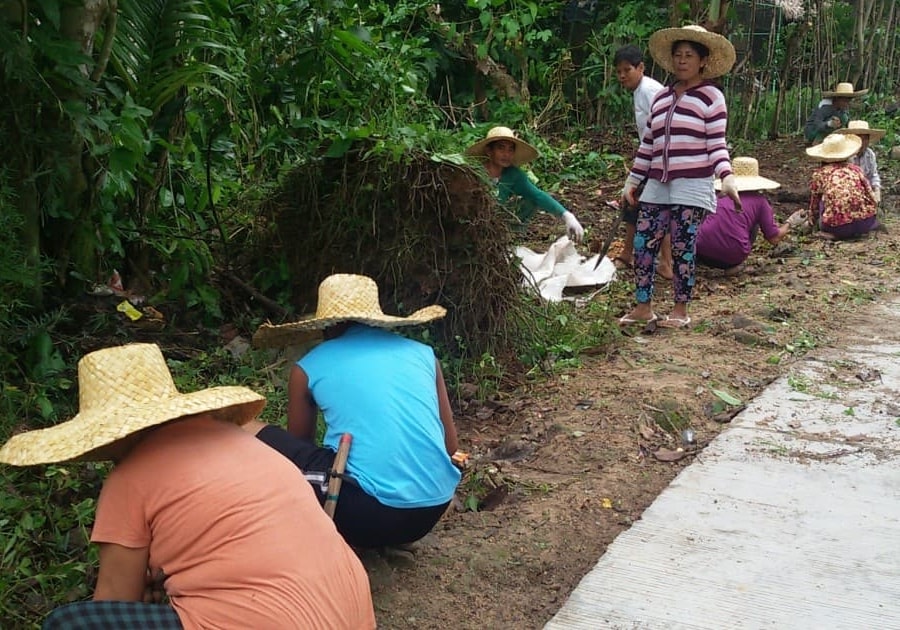First published with the title Balangiga and the IDPs in My Mind on September 16, 2019.
Unlocking Community Potential: The Balangiga Transformation
In the period spanning mid-2003 to 2006, I played a pivotal role in a team that orchestrated community gatherings in Balangiga, Eastern Samar. This initiative was a component of the KALAHI CIDSS Project, a remarkable venture propelled by the Department of Social Welfare and Development (DSWD). This endeavor harnessed the strength of community participation to execute, oversee, and maintain development projects. Amidst its success, the project later extended its reach across countless municipalities, while a bill aims to institutionalize KALAHI's empowering legacy.
Empowering the Underserved: The Impact of KALAHI CIDSS
KALAHI CIDSS emerged as a beacon of hope, a poverty alleviation and good governance program that ignited transformation where it was needed most. Its unparalleled strength lay in its ability to transcend barriers and reach marginalized barangays, often considered challenging to engage. One such example is Balangiga, where we ventured to Maybunga, the farthest barangay, sometimes bi-monthly.
The heart of this initiative resided in the empowerment of communities to identify solutions that could uplift their lives. Witnessing tangible outcomes of this endeavor—such as a functional water system—infused residents with newfound self-assurance. Bolstered by this confidence, they embarked on a journey to collaborate with the government. For a community that had endured isolation, this metamorphosis was nothing short of revolutionary.
A Government Unveiled: Uniting with KALAHI
Before KALAHI's intervention, the government remained an enigma to these communities. Aside from an elementary school teacher who occasionally interacted with them, government involvement was nearly nonexistent. Their connection with the municipal agriculture office was a rare occurrence, as the municipality's financial constraints restricted fieldwork. This isolation ended in KALAHI's embrace, marking a shift in their perception of governance.
The teacher's steadfast dedication, navigating challenging conditions to educate Grades 1 to 3 pupils in a single class, mirrored the resilient spirit of the community. KALAHI's arrival unraveled new possibilities, bridging a chasm that previously separated the people from the realm of government.
Navigating Challenges: Balancing Necessities
Maybunga, though once a thriving hub, had dwindled to a mere 35 residents by 2003, from a peak of around 250 families in the early 1980s. Historical turmoil, including martial law-induced military abuses, cast a shadow on the community's vibrancy. Martial law era clashes forced the residents to flee in 1984, leaving Maybunga nearly uninhabited. This harrowing period led to a mass exodus, causing interior municipalities' populations in Samar to plummet by 90 percent.
An Ongoing Struggle: From Displacement to Resilience
As the IDPs (internally displaced persons) dispersed to various destinations, including Tacloban City, their resilience faced yet another test in the face of Typhoon Yolanda's devastating impact in 2013. Often residing in high-risk areas due to limited options, they found themselves grappling with displacement once again. United Nations findings underscored that poverty, conflict, and environmental threats fuel displacement to urban centers, perpetuating a cycle of adversity.
Yolanda's aftermath saw many IDPs confronting displacement for the second time, a bitter reminder of the unyielding challenges they faced. The cycle of poverty-induced displacement transcended generations, impacting early settlers who migrated from the Poblacion and neighboring urban centers. While they initially owned small plots of land, emergencies coerced them into parting with their only assets, perpetuating the cycle of landlessness and poverty.
A Beacon of Resistance and Resilience
Balangiga's historical defiance against American colonizers, marked by a fateful uprising, resonates as a testament to the community's spirit. This courage, although challenging, earned them recognition and support from the government. A recent stride in this direction is the paved road that now connects upland barangays to the Poblacion, a symbol of progress.
Lessons from past disasters such as Yolanda emphasize the integration of disaster risk reduction into both humanitarian efforts and developmental strategies. The connection between the two is undeniable. Governments confronting urban challenges must heed Balangiga's journey, analyzing how economic concentration shapes urbanization trends while addressing issues like congestion, crime, and urban poverty.
Uplifting Balangiga's Legacy: A Testament to Endurance
The story of Balangiga exemplifies the potential within communities to transform themselves when empowered by effective initiatives like KALAHI CIDSS. This program embodies the essence of resilience, forging a path towards a brighter future through collaboration, innovation, and enduring determination. As we reflect on Balangiga's journey, let it serve as a reminder that empowerment and unity can pave the way for a prosperous tomorrow.







No comments:
Post a Comment